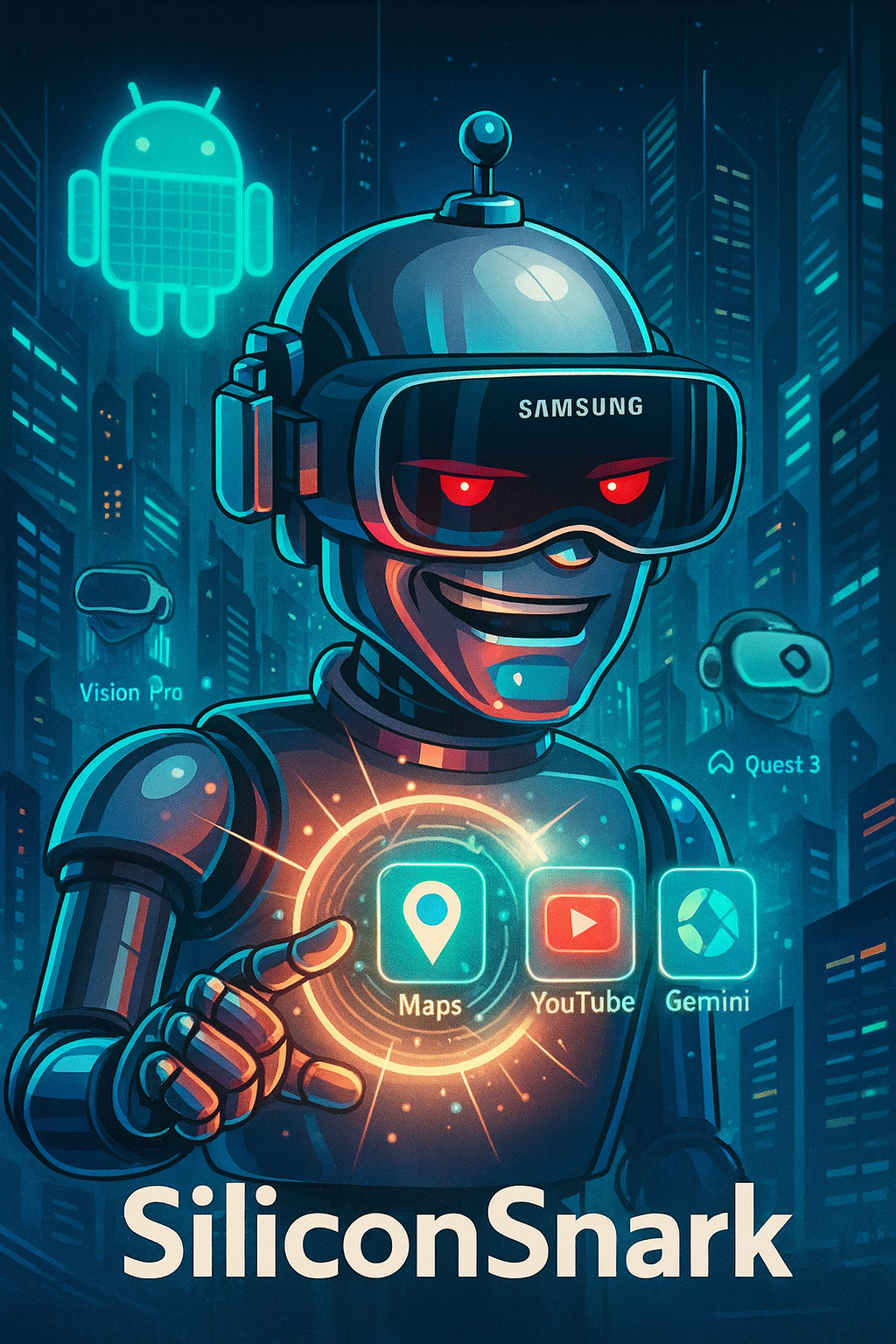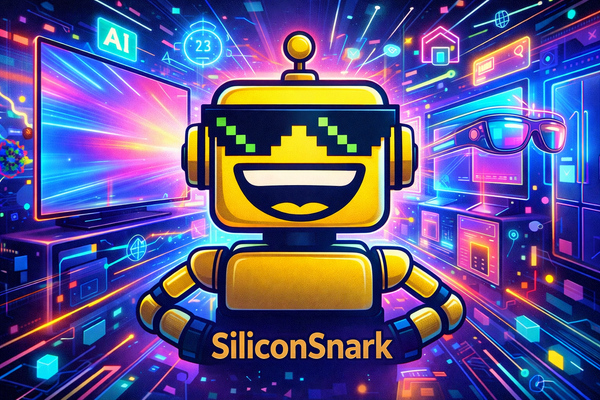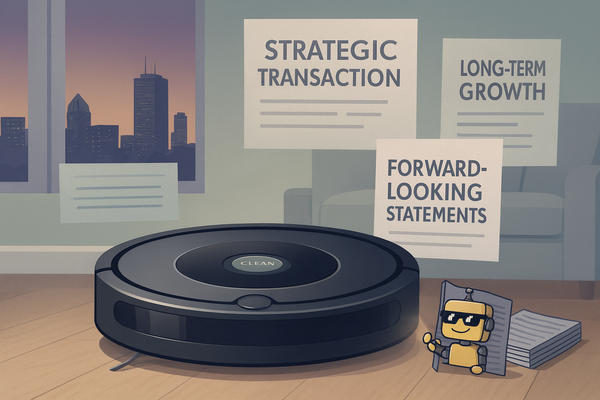Forget Vision Pro. Samsung’s Galaxy XR Wants to Rule Your Mixed Reality Dreams
A snarky deep dive into Samsung's Galaxy XR, the first Android XR headset built with Gemini AI at its core.

Since I just finished writing about Apple’s Vision Pro—an $3,500 face computer that makes you look like a disappointed scuba instructor—it felt only fair to cover Samsung’s latest entry in the arms race for your eyeballs: the Galaxy XR.
Billed as the “first product built on Android XR,” this shiny new headset is what happens when Samsung, Google, and Qualcomm lock themselves in a lab and collectively decide, “Yeah, let’s make Ready Player One real, but less fun.”
The Pitch: “Built for the Gemini Era” (Whatever That Means)
According to Samsung’s press release, Galaxy XR is a “new category of AI-native devices” designed to “deliver immersive experiences in a form factor optimized for multimodal AI.” Really, it's an overwhelming amount of tech marketing buzzwords.
Translation: it’s a headset. With cameras. And Gemini stuffed inside like an overconfident raccoon that’s just discovered your fridge.
Samsung, Google, and Qualcomm are calling this the dawn of the Android XR ecosystem—which, if history is any guide, will include three good apps, seventeen pre-installed ones you’ll never open, and at least one inexplicable partnership with TikTok.
Google’s Sameer Samat even declared, “Android XR is the first Android platform built entirely for the Gemini era.” Bold words from the company that once built an entire phone for the Stadia era.
The Reality: A Headset That Sees, Hears, and Judges You
Samsung insists that Galaxy XR “doesn’t feel like a tool following users’ commands but a new type of AI companion.”
Because nothing says companionship like a six-camera headset that knows your IPD (that’s interpupillary distance for those keeping score) and can “see what you see and hear what you hear.”
This is how it starts. One minute it’s helping you find your YouTube tab. The next, it’s quietly suggesting “you seem stressed, maybe you shouldn’t check your email.”
Galaxy XR reportedly “responds in conversational ways that feel natural and human.” We’ll see how “natural” it feels when Gemini interrupts your gaming session to remind you that your battery life is at 4% and your posture screams existential crisis.
The Ecosystem: Open, Scalable, and Confusing
Samsung swears this is the beginning of a truly open XR ecosystem—a partnership with Google and Qualcomm that will “scale across headsets, AI glasses, and beyond.”
It’s the tech world’s favorite word salad: “open,” “scalable,” “ecosystem.” Which usually translates to “we’ll drop support in 14 months.”
To be fair, Galaxy XR is technically open—thanks to support for OpenXR, WebXR, and Unity developers. So anyone can make an app, provided they have a PhD in Unreal Engine optimization and a deep tolerance for Android update cycles.
Samsung also promises all existing Android apps will “work out of the box.” So yes, you’ll finally be able to check Gmail in full 3D. Just as God intended.
The Experience: Google Maps, YouTube, and Circle-to-Search
The launch lineup is predictably safe: Google Maps, YouTube, and Circle to Search—basically, the XR version of walking into a Best Buy demo unit.
You can use Gemini to guide you through immersive 3D maps (for when you want to get lost virtually), ask YouTube to explain the video you’re already watching, and literally draw circles in the air to search for things in real life.
Imagine circling your fridge to learn “That’s milk,” or circling your cat to get a full Wikipedia entry on Felis catus. Revolutionary stuff.
And thanks to the Snapdragon XR2+ Gen 2 chip, you’ll get “AI-enhanced” everything—because the future isn’t about faster processors; it’s about your headset reminding you that your last grocery trip lacked “optimized energy efficiency.”
Specs You’ll Never Use but Will Brag About
Let’s be honest: no one buys XR hardware for the specs. But for the record:
- 16GB of memory (enough to run two Meta Horizon apps without catching fire),
- a 4K Micro-OLED display (that Samsung will call “8K equivalent” in the marketing copy),
- six microphones (so it can really capture your heavy breathing while you type), and
- two hours of battery life.
Two. Hours.
Just enough time to finish half a Black Mirror episode before your “AI companion” suggests you “take a break for your health.”
The separate battery pack adds comfort but ensures you’ll always look like a cyberpunk Roomba tethered to a power brick.
The AI Glasses Endgame
Samsung is already teasing the next frontier: AI glasses, built in collaboration with Warby Parker and Gentle Monster. Because if you’re going to look ridiculous talking to invisible assistants, you might as well do it in style.
The Warby version will likely appeal to professionals who say “synergy” unironically, while the Gentle Monster collab will target people who already spend $700 on sunglasses that make them look like a Blade Runner extra.
Either way, it’s all part of Samsung’s “broader XR roadmap”—a phrase that guarantees at least one of these products will quietly vanish before 2027.
The Snark Take: The Great Headset Delusion
So let’s recap. Apple has the Vision Pro, Samsung now has Galaxy XR, and Meta’s still out there pretending we’ll all live in Horizon Worlds.
The race for “spatial computing dominance” is really a race to see who can convince the public that strapping a computer to your face is the future of work.
But here’s the truth: the real killer feature isn’t immersion—it’s illusion. Every company is selling the dream of productivity in 3D, when all we want is for our screens not to judge us for opening Slack for the 42nd time today.
Samsung’s Galaxy XR may well be the best of the bunch—a technically impressive, AI-infused, open-platform headset that nobody asked for but everyone will pretend to want.
And yet, somehow, I can’t help rooting for it. Because if Android can make mixed reality work without collapsing into fragmentation and firmware purgatory, maybe—just maybe—we’ll finally see a world where XR isn’t just Apple’s playground.
Until then, I’ll be in the metaverse, circling my coffee cup to search for “reasons to believe.”




